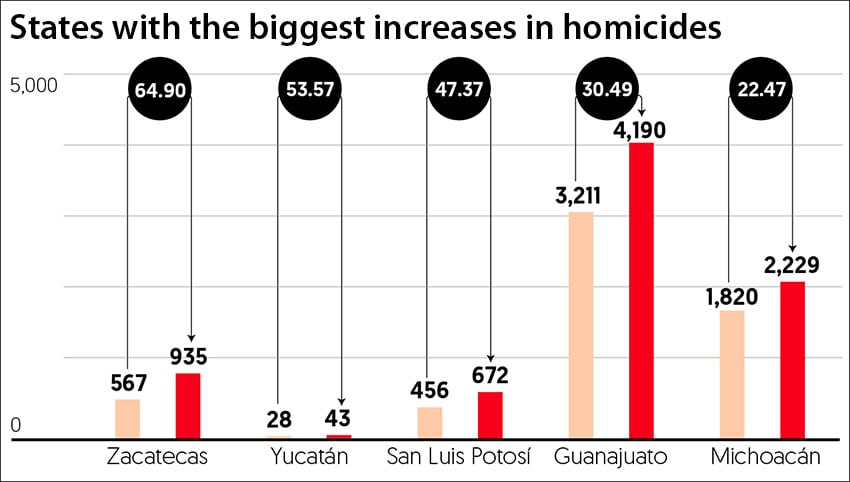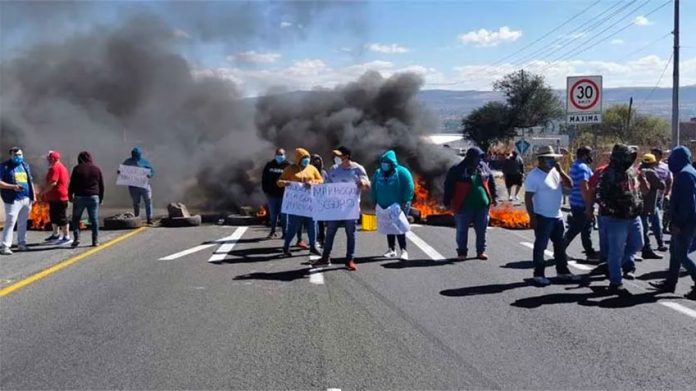At the end of 2020, Guanajuato will receive the unenviable title of Mexico’s most violent state for a second consecutive year.
Official statistics show that 4,190 people were murdered in the Bajío region state between January and November.
Guanajuato’s homicide count is 58.5% higher than that of Baja California, which ranks second for murders with 2,643 victims in the first 11 months of the year.
México state ranks third with 2,592 victims, followed by Chihuahua, Jalisco and Michoacán with 2,516, 2,421 and 2,229 victims, respectively.
There were almost 32,000 homicide victims in Mexico in the first 11 months of the year, which is likely to surpass 2019 as the most violent year on record.

The victim tally between January and November in Guanajuato, where the Jalisco New Generation Cartel and the Santa Rosa de Lima Cartel are engaged in a vicious turf war, was 30.5% higher than in the same period of 2019.
The significant increase has occurred despite – or perhaps because of – the arrest of Santa Rosa de Lima Cartel leader José Antonio “El Marro” Yépez Ortiz in early August.
In sheer numbers, Guanajuato was also the most violent state in Mexico in 2019 with more than 3,500 homicide victims. In per-capita terms, it was the fifth most violent state with 44.95 homicides per 100,000 residents. Colima ranked first, followed by Baja California, Chihuahua and Morelos.
After the first 11 months of 2020, Guanajuato is the fourth most violent state in per-capita terms with 50.11 murders per 100,000 inhabitants. Baja California ranks first with a rate of 65.15 followed by Colima and Chihuahua with rates of 63.43 and 56.45, respectively.
Guanajuato is not the only state that has seen an increase in homicide numbers in 2020.
All told, 11 states recorded more murders between January and November of this year compared to the same period in 2019. Zacatecas saw the sharpest increase with the number of victims increasing 64.9% to 935 from 567.
Yucatán recorded the second biggest increase, but its homicide numbers remain very low. There were 43 murder victims in that state between January and November, a 53.6% increase compared to the 28 victims in the same period last year.
Homicides increased 47.4% to 672 in San Luis Potosí and 22.5% in Michoacán to 2,229.
Sonora, Durango, Campeche, Querétaro, Chihuahua and Hidalgo recorded increases of between 1% and 18%.
The number of homicide victims in the other 21 states declined in the first 11 months of the year.
Baja California Sur (BCS), Guerrero, Veracruz and Tamaulipas – four states that have been among the most violent in Mexico in recent years – were among the federal entities that saw a decrease in violence.
The number of homicide victims declined 30.5% in BCS, 22.2% in Guerrero, 16.2% in Veracruz and 15.2% in Tamaulipas.
Source: El Financiero (sp)
